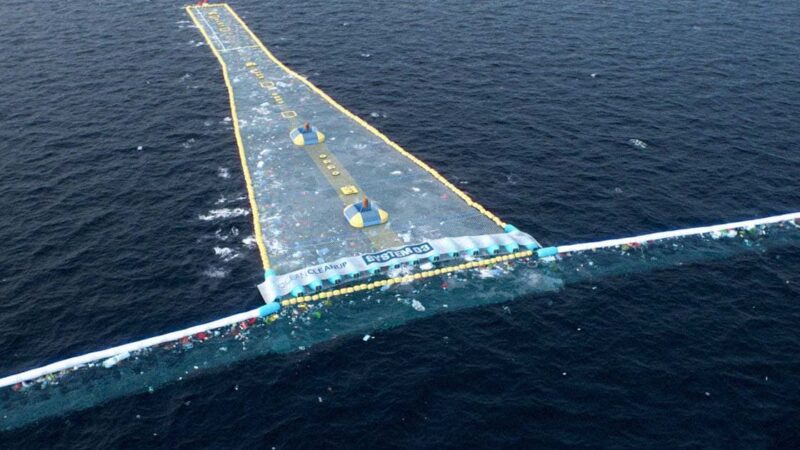On the anniversary of the landmark global climate deal, we can see the path to limiting global warming to 1.5 degrees Celsius—but we’re not remotely far enough down it.
Adele Peters
It’s been five years since the world’s leaders met in Paris and hammered out the terms of the Paris Agreement, the landmark climate deal with the goal to cut emissions quickly enough to avoid the worst impacts of climate change. Since then, solar power has become the cheapest form of electricity in history. Countries like China and the U.K. have committed to reach net-zero emissions. But the world is still very far from on track to actually addressing global warming.
A recent report looks at what’s necessary to limit global warming to 1.5 degrees Celsius, the most ambitious goal of the Paris Agreement, and how much progress is happening across six key sectors: power, buildings, industry, transportation, agriculture, and forests. “For the lion’s share of sectors, we are falling woefully short of where we need to be to avoid the worst climate change impacts,” says Kelly Levin, a senior associate in the global climate program at World Resources Institute and one of the authors of the report, which was created along with the ClimateWorks Foundation. “Even the places where we thought we were doing pretty well, to be able to be aligned with a 1.5 trajectory, we still need to accelerate action really significantly.”
Take renewable electricity, for example. Wind and solar power is growing quickly, and made up 72% of all new electricity capacity added in 2019. But to be on track for the emissions cuts that are needed by the end of this decade, the overall share of renewables in the energy sector would have to be moving five times faster. Coal plants, now less economical than renewables, are closing because of economics. But to be moving at the necessary pace, coal plants would also need to be phased out five times faster.
Overall, to limit warming to 1.5 degrees, the world needs to reach net-zero emissions by roughly the middle of the century, and cut emissions by about half by 2030. Out of 21 indicators examined in the report, only two were on track. Crop yields are growing at the right pace to be able to feed 10 billion people by the middle of the century without bulldozing down more forests to make room for farms. The growth in productivity from cattle farming is also on track. Still, the report notes that in both of these cases, it will be challenging to keep up the current pace of progress. And the rest of the indicators are even more challenging. “Thirteen are moving in the right direction, but moving much too slowly for what is needed,” says report coauthor Katie Lebling. “Two of them are going entirely the wrong way. So that’s very worrying.”
The carbon footprint of new buildings needs to shrink faster, and energy retrofits need to happen faster. The carbon footprint of making steel and cement needs to shrink faster. Electric vehicles need to be adopted much more quickly—by 2030, 12 times faster than the current sales rate. While sales are happening faster in a handful of places, such as Norway, where 56% of new cars sold in 2019 were EVs, they still only make up around 1% of all vehicles on the road. (The transition will be helped by the fact that electric vehicles will soon be as cheap to buy and operate as gas-powered cars, perhaps as soon as 2024.) New trees need to be added five times faster. As for the ones where no progress is being made at all: Deforestation has been increasing since the turn of the millennium; it needs to start shrinking. The carbon footprint from agriculture is also growing and needs to completely change course.
Different challenges exist in each sector. In the energy sector, “the market is headed in completely the right direction in terms of scaling up renewables, but we have government policies that perpetuate fossil fuel investments, which is very, very problematic,” Levin says. “We also don’t have the incentives to be able to rapidly scale some of the sectoral developments. I think this is certainly a wake-up call as to the scale of change that we need.”
When countries first joined the Paris Agreement, they made voluntary commitments to cut emissions—each a first step in a series of goals that are supposed to ratchet up over time. Now, countries are in the process of setting new goals and figuring out how to accomplish them, with plans in place by the next major climate conference, COP26, which will be held in Glasgow, Scotland, in November 2021. Because Trump pulled the U.S. out of the Paris Agreement, and worked to dismantle policy designed to cut American emissions, Biden will have an even more difficult task to get the U.S.—the world’s second-largest emitter—in line with what’s scientifically necessary.
The consequences of moving too slowly are painfully obvious. So far, the global average temperature has risen around 1 degree Celsius. This year, wildfires burned more than 4 million acres in California. Bushfires in Australia, spanning from late 2019 to early 2020, destroyed 46 million acres. A record 30 named storms spun through the Atlantic, with six becoming major hurricanes. In Bangladesh, millions of people were displaced by massive floods. Death Valley, California, reached the highest temperature ever recorded on Earth. The Great Barrier Reef suffered its worst mass bleaching in history. The melting ice sheet in Greenland lost more than 580 billion metric tons of ice.
Without transformational change—and not just small improvements—climate impacts will get far worse. “The decisions countries make in the lead-up to COP26 on future climate commitments could lock us into a carbon-intensive trajectory or help steer us toward one that avoids the worst climate impacts and increases resilience,” the authors write in the report. “We have a narrow window of time to change direction.”


